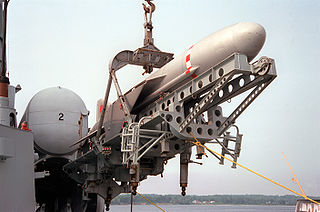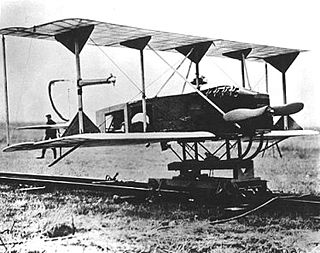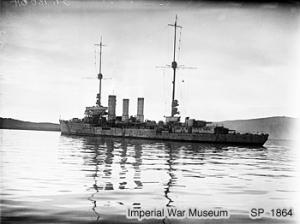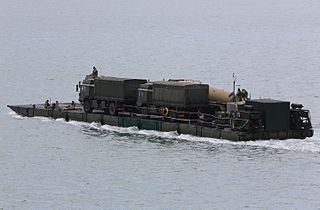 Diagram of a Fernlenkboot | |
| Class overview | |
|---|---|
| Name: | Fernlenkboote |
| Builders: | Siemens-Schuckert |
| Operators: | |
| Completed: | 17 |
| General characteristics | |
| Tonnage: | 6 |
| Length: | 17 m (55 ft 9 in) |
| Speed: | 30 knots (56 km/h; 35 mph) |
| Crew: | None |
| Armament: | 700 kg (1,500 lb) explosive charge |
The FL-boat (Fernlenkboot, literally "remote controlled boat") was a weapon used by the Imperial German Navy during World War I. It was a remote-controlled motorboat, 17 m long, carrying 700 kilograms (1,500 lb) of explosives, which was intended to be steered directly at its targets - initially the Royal Navy monitors operating off the coast of Flanders.

The Imperial German Navy was the navy created at the time of the formation of the German Empire. It existed between 1871 and 1919, growing out of the small Prussian Navy, which primarily had the mission of coastal defence. Kaiser Wilhelm II greatly expanded the navy, and enlarged its mission. The key leader was Admiral Alfred von Tirpitz, who greatly expanded the size and quality of the navy, while adopting the sea power theories of American strategist Alfred Thayer Mahan. The result was a naval arms race with Britain as the German navy grew to become one of the greatest maritime forces in the world, second only to the Royal Navy. The German surface navy proved ineffective during World War I; its only major engagement, the Battle of Jutland, was indecisive. However, the submarine fleet was greatly expanded and posed a major threat to the British supply system. The Imperial Navy's main ships were turned over to the Allies, but were sunk at Scapa Flow in 1919 by German crews.

World War I, also known as the First World War or the Great War, was a global war originating in Europe that lasted from 28 July 1914 to 11 November 1918. Contemporaneously described as "the war to end all wars", it led to the mobilisation of more than 70 million military personnel, including 60 million Europeans, making it one of the largest wars in history. It is also one of the deadliest conflicts in history, with an estimated nine million combatants and seven million civilian deaths as a direct result of the war, while resulting genocides and the 1918 influenza pandemic caused another 50 to 100 million deaths worldwide.

The Royal Navy (RN) is the United Kingdom's naval warfare force. Although warships were used by the English kings from the early medieval period, the first major maritime engagements were fought in the Hundred Years War against the Kingdom of France. The modern Royal Navy traces its origins to the early 16th century; the oldest of the UK's armed services, it is known as the Senior Service.
FL-boats were constructed by Siemens-Schuckertwerke. They were driven by internal combustion engines and controlled remotely from a shore station through spooled wire unwound behind the boat. The wire was 20 kilometres (12 mi) long and the spool weighed 800 kilograms (1,800 lb). An aircraft could be used to signal directions to the shore station by radio. The commands available to the boat operator were:

Siemens-Schuckert was a German electrical engineering company headquartered in Berlin, Erlangen and Nuremberg that was incorporated into the Siemens AG in 1966.
- System test
- Engine start, engine stop
- Set Rudder position
- Turn on a light, to enable the boat to be tracked at night
- Detonate the warhead, to prevent capture of the boat if it missed its target
Planned developments were to use a control station carried on a ship, in an airship or use a radio-control system. The boats could attain speeds of 30 knots (56 km/h; 35 mph).
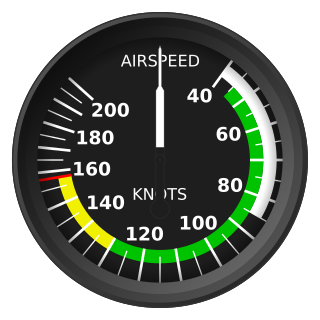
The knot is a unit of speed equal to one nautical mile per hour, exactly 1.852 km/h. The ISO standard symbol for the knot is kn. The same symbol is preferred by the Institute of Electrical and Electronics Engineers (IEEE); kt is also common, especially in aviation where it is the form recommended by the International Civil Aviation Organization (ICAO). The knot is a non-SI unit. Worldwide, the knot is used in meteorology, and in maritime and air navigation—for example, a vessel travelling at 1 knot along a meridian travels approximately one minute of geographic latitude in one hour.
On 1 March 1917 an FL-boat hit the Nieuwpoort mole and on 28 October 1917 one hit the Royal Navy monitor HMS Erebus.

Nieuwpoort is a municipality located in Flanders, one of the three regions of Belgium, and in the Flemish province of West Flanders. The municipality comprises the city of Nieuwpoort proper and the towns of Ramskapelle and Sint-Joris. On January 1, 2008, Nieuwpoort had a total population of 11,062. The total area is 31.00 km² which gives a population density of 350 inhabitants per km². The current mayor of Nieuwpoort is Geert Vanden Broucke (CD&V)
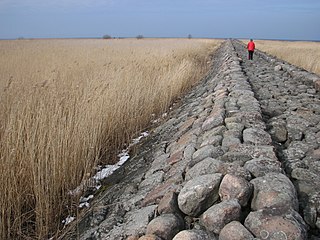
A mole is a massive structure, usually of stone, used as a pier, breakwater, or a causeway between places separated by water. The word comes from Middle French mole, ultimately from Latin mōlēs, meaning a large mass, especially of rock; it has the same root as molecule and mole, the chemical unit of measurement. A mole may have a wooden structure built on top of it that resembles a wooden pier. The defining feature of a mole, however, is that water cannot freely flow underneath it, unlike a true pier. The oldest known mole is at Wadi al-Jarf, an ancient Egyptian harbor complex on the Red Sea.

HMS Erebus was a First World War monitor launched on 19 June 1916 and served in both world wars. She and her sister ship Terror are known as the Erebus class. They were named after the two bomb ketches sent to investigate the Northwest Passage as part of Franklin's Lost Expedition (1845-1848), in which all 129 members eventually perished.





